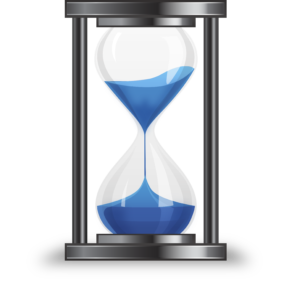Wednesday, November 1, 2017
Halloween Festival 2017
We had a Spooktacular time at Halloween Festival this year. Watch the video for the highlights!
Monday, August 14, 2017
2017 Practice Projects
Monday, October 24, 2016
5 Creative Times for Practicing
While a consistent daily routine for practice is best, there are going to be days that the schedule is just thrown out the window. It's during those times that families need to get a little more creative in when their child can practice.
1. Practice BEFORE school.
I was my families alarm clock when I was taking lessons. And let me tell you, I had to wake up early if I was going to get practice in before school. I got ready for school first so I would be more alert and awake when I went to the piano to practice. I was usually involved in extra-curricular activities after school, so by the time I got home I was very glad that I already had my practicing done. If families can swing it, before school practicing is really an ideal time.
2. Practice during dinner prep, clean up or chores.
If given the choice to help with dinner, setting the table, washing dishes and other chores OR practicing, most students would choose to spend some time on their instrument. This is actually a win-win time because everyone can listen and give encouraging remarks during this practice time.
3. Practice at another location.
On occasion practicing at home is just not possible. So that is when you really need to get creative. School, hotels, music stores, neighbors are some possible places you can find a piano. Of course, be sure to get permission first! I've even seen a teacher share a picture of her student taking a keyboard to the park and practicing on it during her brothers soccer game. I've had students on a long trip bring a keyboard and practice in their car, or on the iPad (Piano Maestro is awesome for this!). Another student told me recently that he has "ghost" practiced a piece he was performing soon on his desk and lap at school. Whatever works, right? Creativity is what it's all about!
4. Practice Triggers.

Practice triggers is just what it sounds like. Think of something that happens on a day to day basis often and choose those as triggers. For example, commercials when watching T.V., when someone leaves a light on in a room, when they go to pick up their iPad or phone, when someone says a particular word or phrase, a particular song on the radio comes on and so on. These are all triggers. When the trigger happens, the student immediately goes to the piano and practices. This can be short interval practice or the full practice session. It's up to you.
5. 1 minute before bedtime.
There are going to be those days when you come home and there is absolutely no time for practice. Well there is ALWAYS time for 1 minute. Set a one minute timer and focus on those tough spots that need the most work. It is amazing what can be accomplished in one minute when you put your mind to it.
How about you? What are some creative times that you like to practice? Leave a comment below!
Monday, August 15, 2016
Practice Projects
Monday, May 9, 2016
Review: The Non-Musician's Guide to Parenting a Piano Player
Peter Walsh, Australian pianist and author, recently published a book, The Non-Musician's Guide to Parenting a Piano Player. I received a copy for review and I have to say that I am so glad I got a physical copy because there are two things that immediately stood out to me before I even opened the cover. First- I loved the soft cover. It felt good in my hands and I haven't come across many books with this particular texture. Second- I love that this book is small enough (7 -3/4" x 5") to fit in a purse or bag so parents can take it with them to read at appointments, their child's activities, carpool, etc... As I'm sure you might relate, when one can read "on the go" it has a greater chance of being read.
So now let's take a look inside... The Non-Musician's Guide to Parenting a Piano Player is a step by step guide for parents who have a child in piano lessons. With 110 pages of helpful information and guidance, the book is divided into 3 parts with 8 chapters. Peter Walsh covers much more than I expected. Because this book is geared towards non-musician parents, he is very careful to not assume anything.
PART 1
Chapter 1: Fostering an interest in studying piano.
Peter begins this chapter with a common narrative parents might hear from their child when they don't want to practice. This immediately helps parents feel that they are not alone, that this is normal. Then he shares different ideas that can help foster that interest and motivation. I love that he included a section on music camps and how it creates a environment for friendships and collaboration. In this chapter he also discusses the importance of role models and shares how a parent can encourage creativity using a storyline in their music.
Chapter 2: Choosing the right teacher
Peter asks several helpful questions in this chapter that a parent might not otherwise think about. For example, "Who is better for the role, a piano teacher or a pianist?" He covers why the personality of a teacher matters. How a student can soar like an eagle. Does the teacher show the student how to practice or simply instruct them to "play better?" And one of my favorites, the importance of regular lesson attendance.
Chapter 3: A learning environment with the right instrument
This chapter focuses on things to think about when choosing a keyboard instrument. He goes through all the pros and cons of a keyboard, digital upright and grand as well as acoustic upright and grand. Once parents know what is the best option for them, it's time to set the right learning environment for practicing at home.
PART 2
Chapter 4: What exactly is practice?
This chapter in the book is geared mostly towards intermediate and advanced level students. However I do think there are bits that are helpful for all students. And definitely good for parents to know regardless where their child's level of studies is currently. In this chapter, Peter shares Josef Hofmann's daily practice pie chart and goes through helpful details and suggestions using this pie chart analogy. "Hoffman is revered as being one of the most technical and musical performers of Western piano literature history." This chapter covers questions such as how long or how many days a week should a student practice? What constitutes proper piano practice? The next several chapters continues along the practicing topic...
Chapter 5: What to look out for
This chapter focuses on what parents should look for in regards to the technique of practicing. Relaxation, posture, freedom and concentration are all helpful sections that parents may not know to even watch for when their child is practicing at home.
Chapter 6: What to listen out for
Listening is such a vital skill, but what happens when parents have no idea if their child is playing the correct notes let alone know what to listen for? Peter Walsh guides parents in practicing- learning music versus their child spending time rehearsing the same piece they already know well. In addition, he introduces the pedals and the technique of playing the pedals and what each purpose of them are. And lastly he provides helpful advice on how to practice. Subdividing sections, hands separate, slow practice, etc. This chapter concludes with helpful guidance when it's time for students to perform their piece both in a concert/recital setting as well as an exam.
Chapter 7: The importance of scales and the dreaded metronome
Peter shares, "I often find that once a student fully understands the reasons behind playing scales and other such exercises, they become more inclined to do them." He shares why scales are important and how they train the fingers and what that really means. In addition he covers the benefits of pattern recognition and comprehension. Along the same idea, the metronome is covered. He calls the metronome "the assistant, not the master."
Chapter 8: Completing the pie chart
This chapter wraps up Part 2 focusing on practicing. Sight-reading, aural, theory, historical researching and critical listening are covered in this section.
PART 3
FAQ's and Glossary
The final part of this book is the FAQ's and glossary. I love this section as it is perfect for both parents and students to use as a quick reference guide which means this book can be used for many years to come.
I can confidently recommend The Non-Musician's Guide to Parenting a Piano Player to parents who wish to be more in tune with their child's musical studies. Peter Walsh does a terrific job in covering quite a bit material that will be helpful even for parents who might have some music experience under the belt.
To see some sample pages or to purchase The Non-Musician's Guide to Parenting a Piano Player visit Amazon here. I would recommend passing the link on to your parents as well.
*affiliate links included
Saturday, December 19, 2015
Music at the Mall 2015
Performing at Arrowhead Mall in front of Dillard's, students brought the holiday spirit to shoppers alike.
Royal Holiday Music Camp
Our royal holiday music campeth was fill'd with fun and fancyeth!
Our first week was playing "peasant" games reviewing musical concepts and preparing f'r upcoming quest challenges.
Merry Tunes (musical form), Interval Blow Bows, Knightly Note Catapult, Scale Tower, Castle Theory Tower, Christmas Rhythm Body Beats.
Our 2nd week was p'rf'rmance bas'd. sharing music togeth'r and rhythm fun. we also made a music tree 'rnament to taketh home.
Royal Students
Subscribe to:
Posts (Atom)










































































































